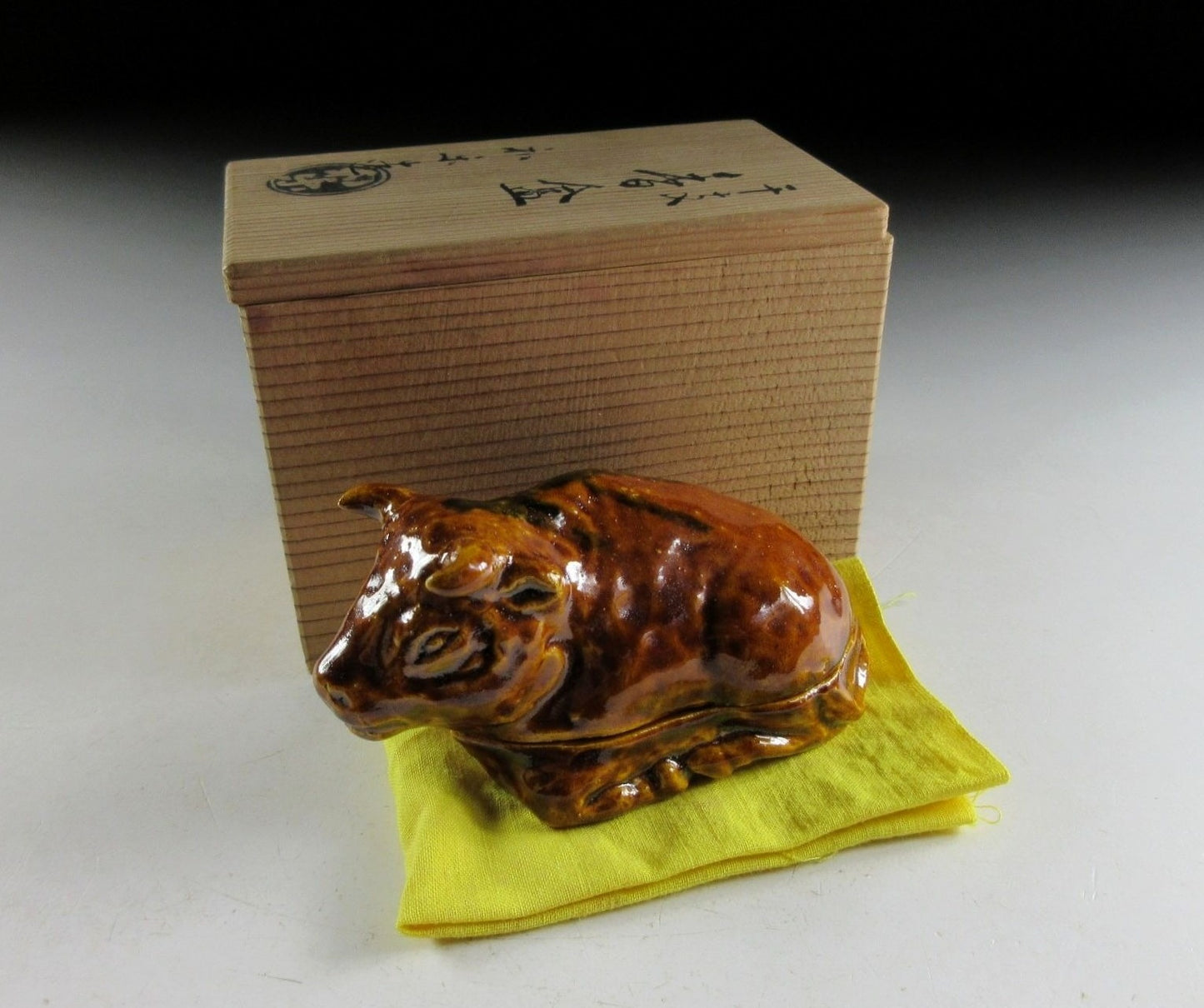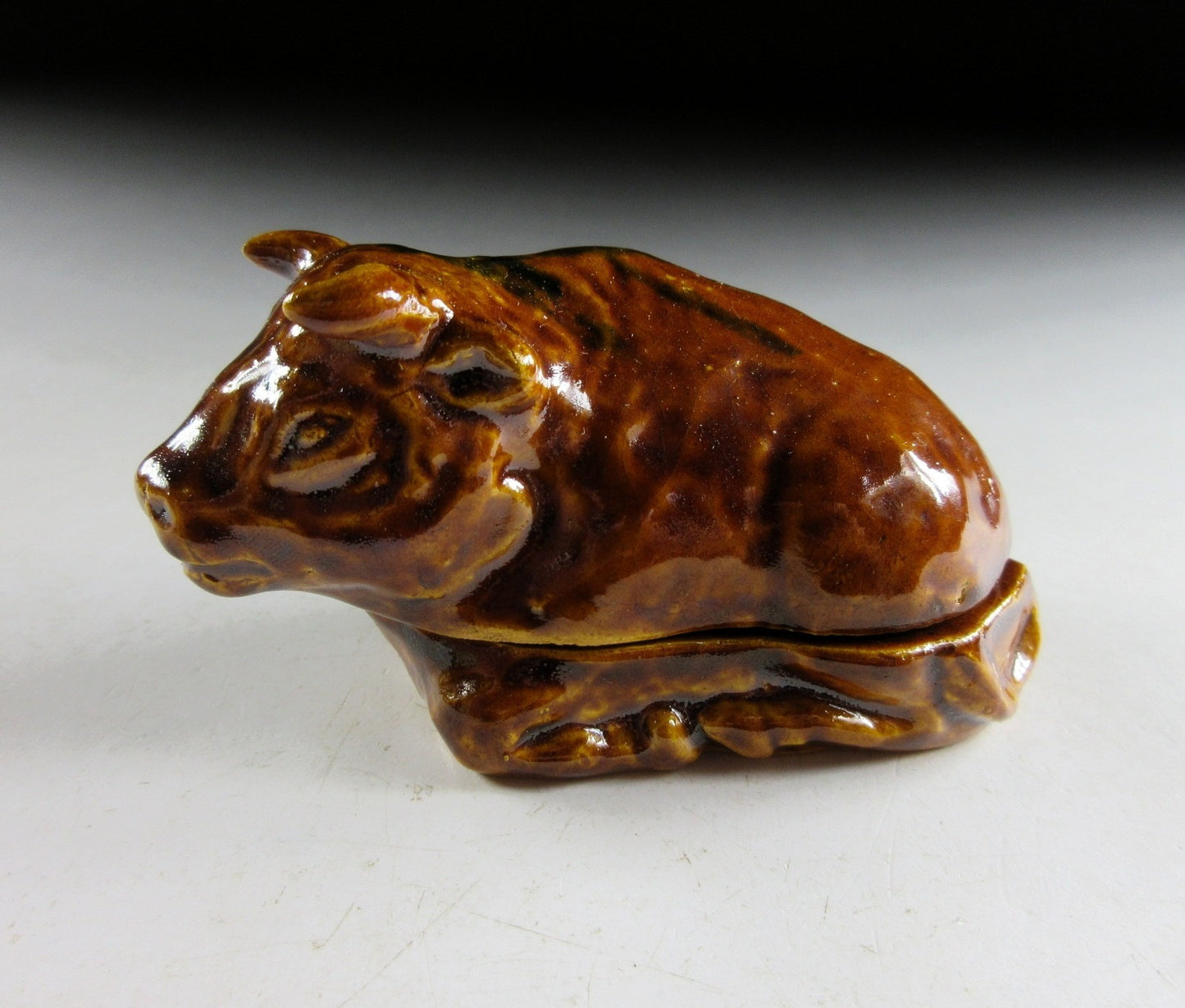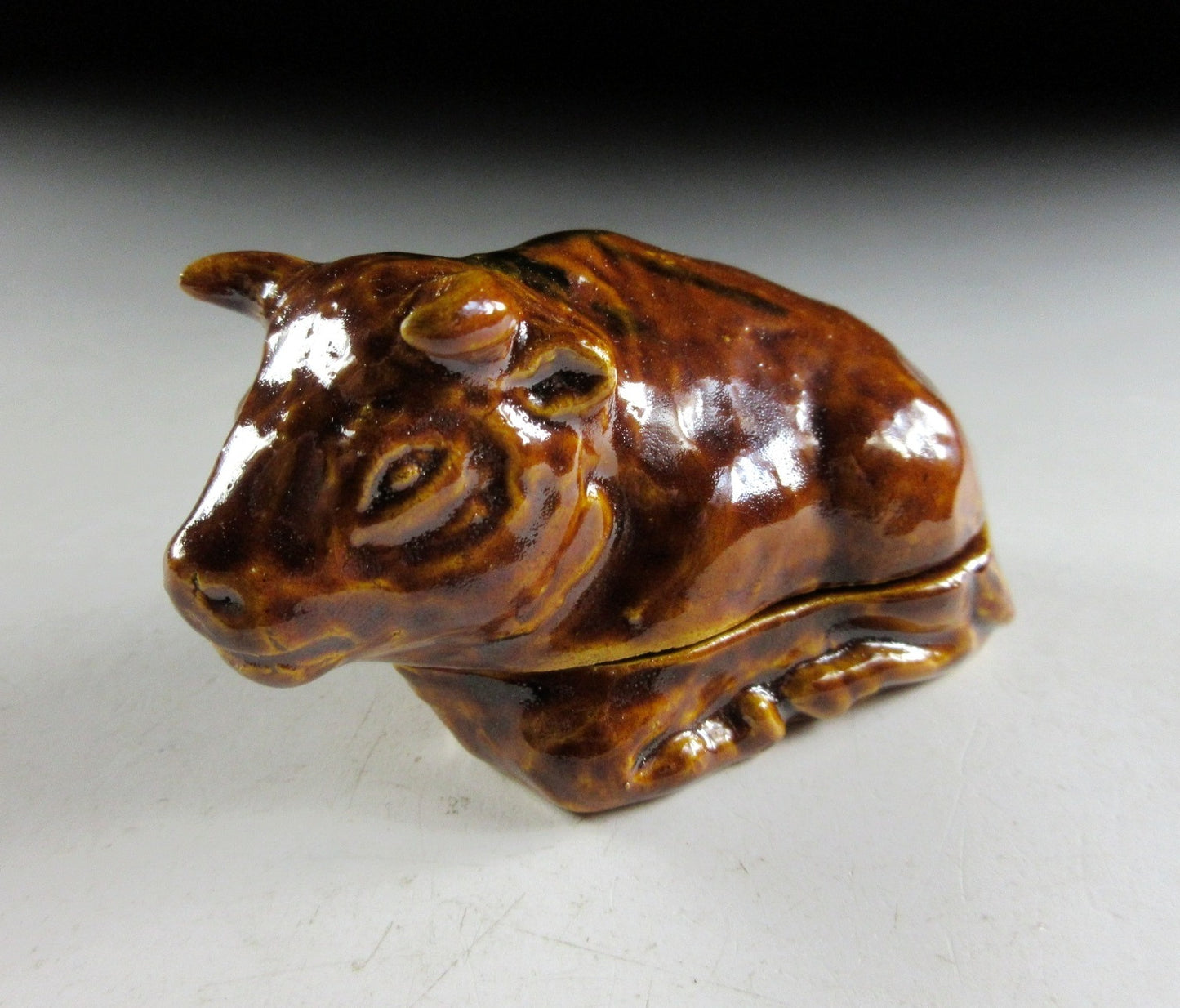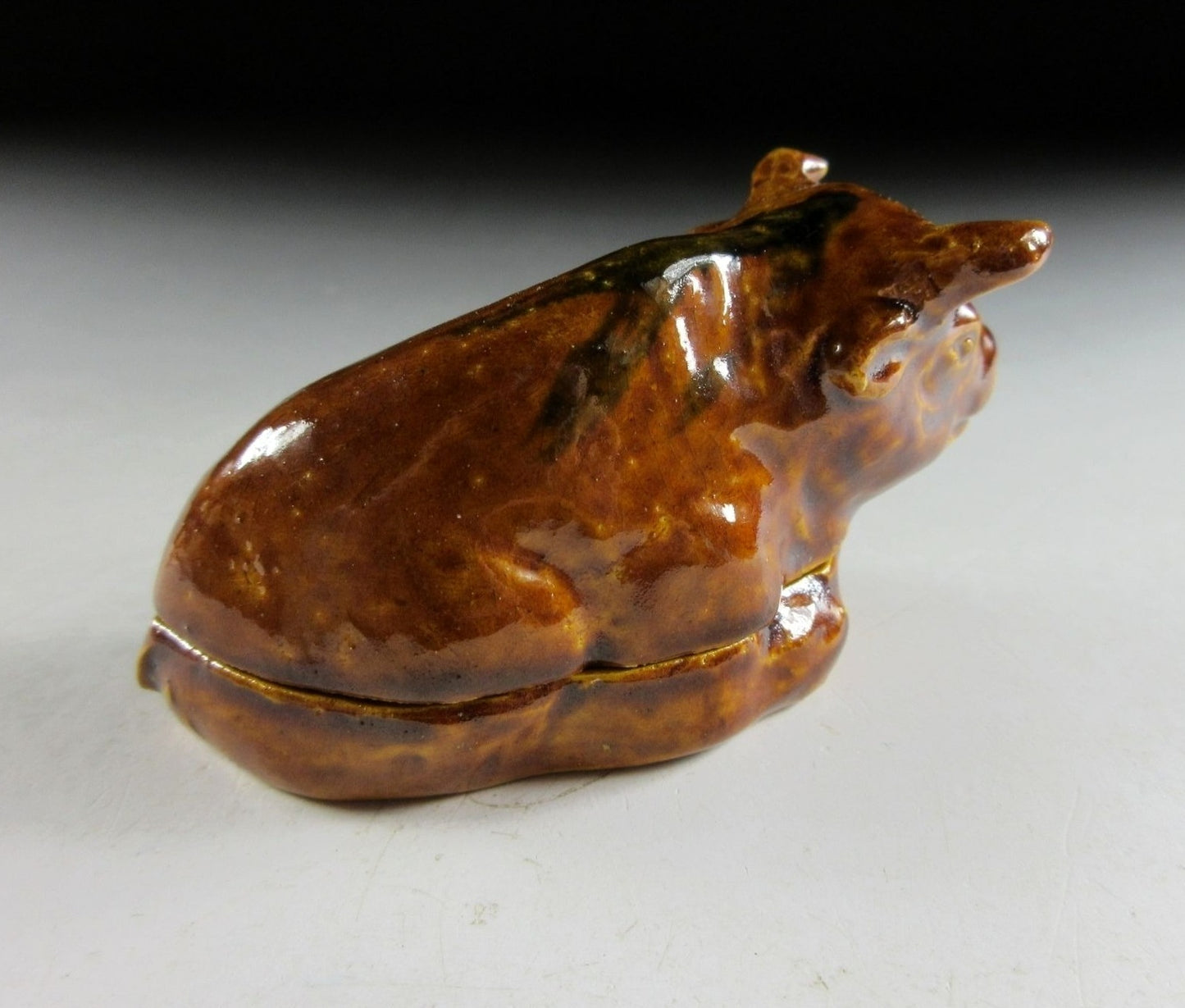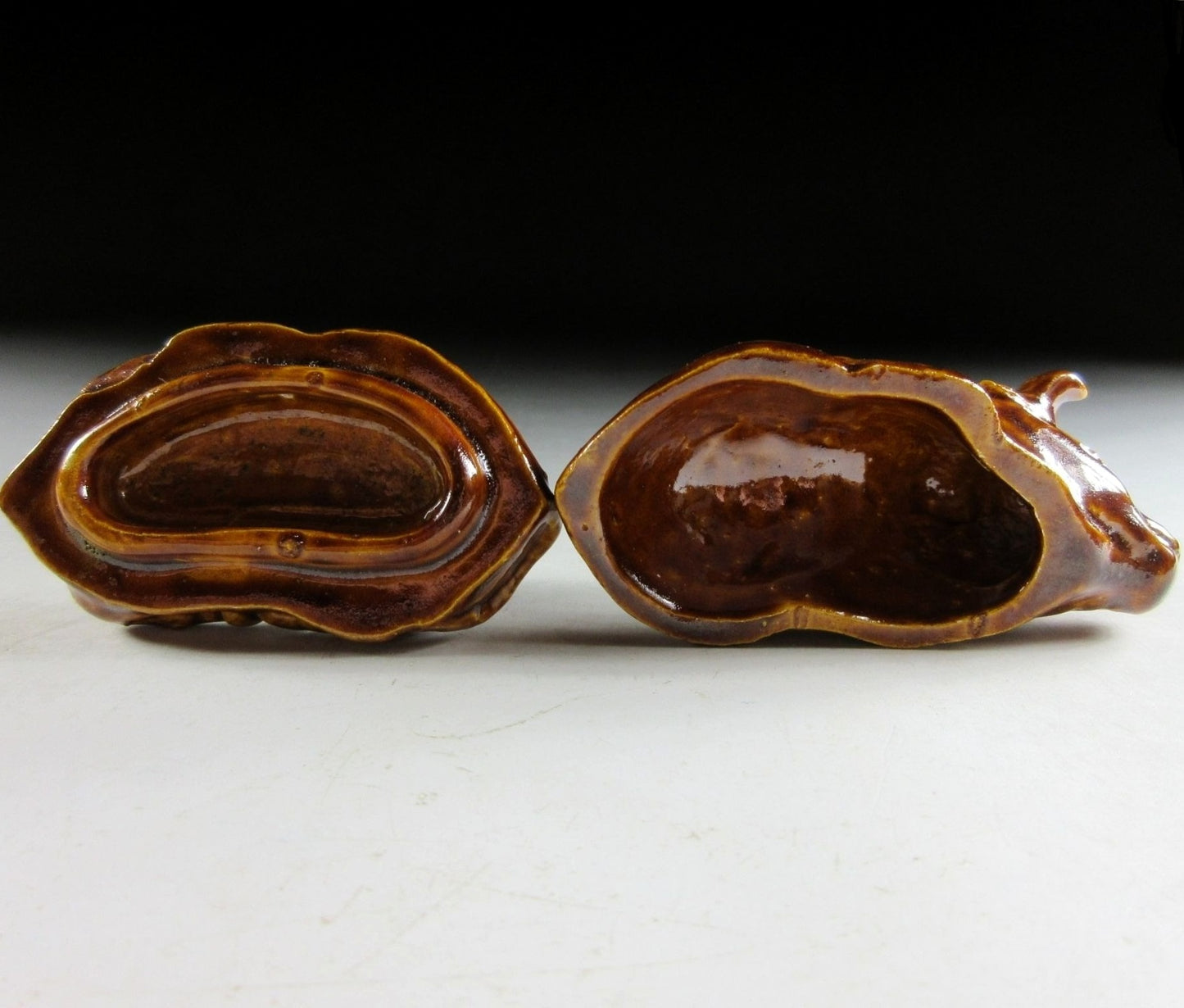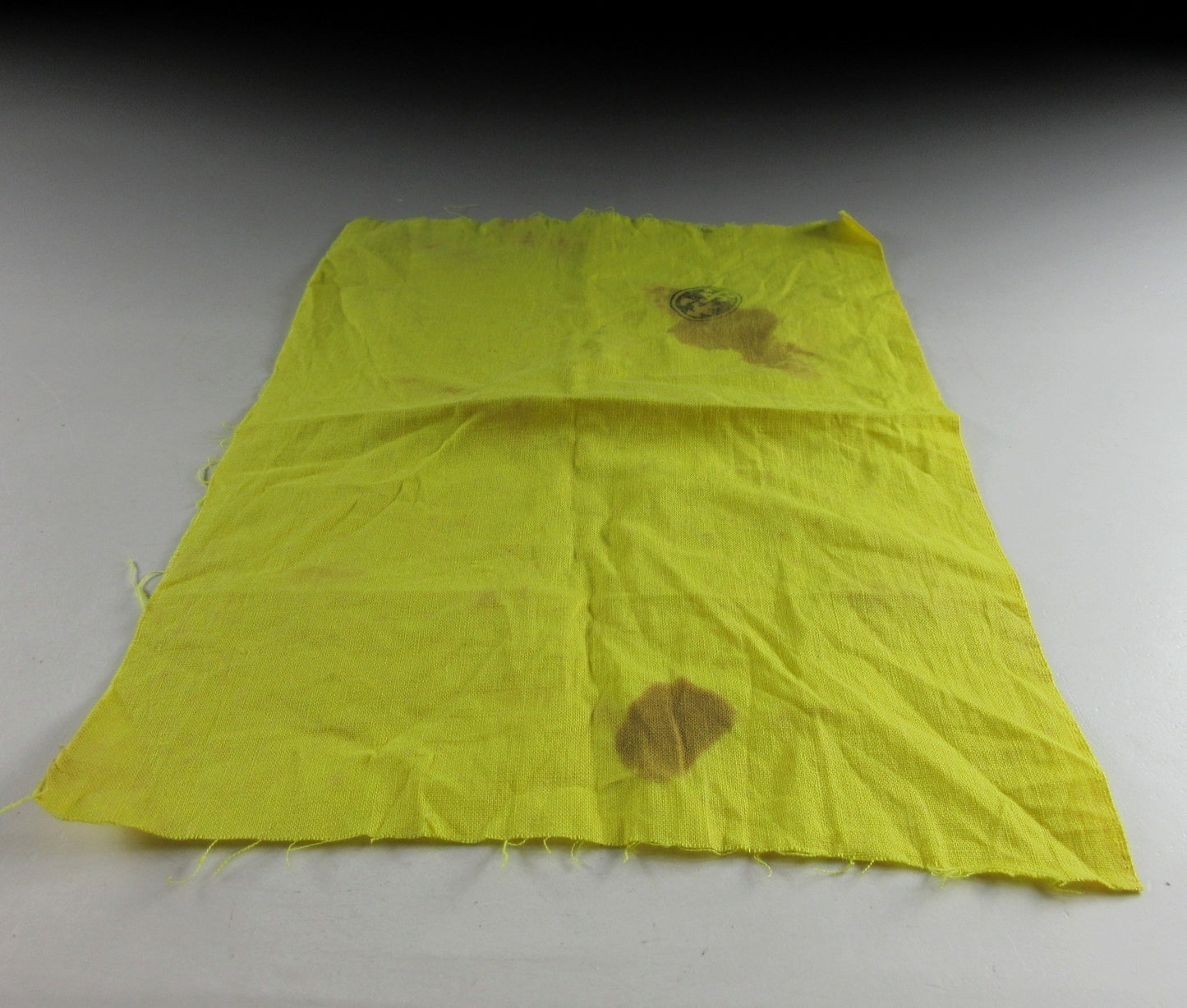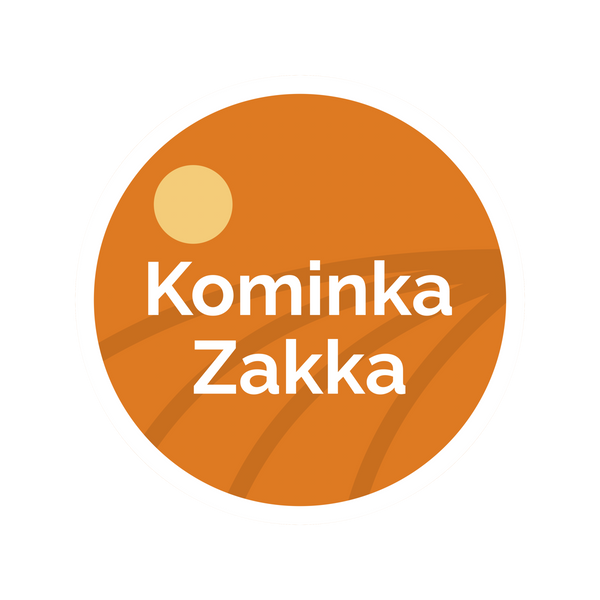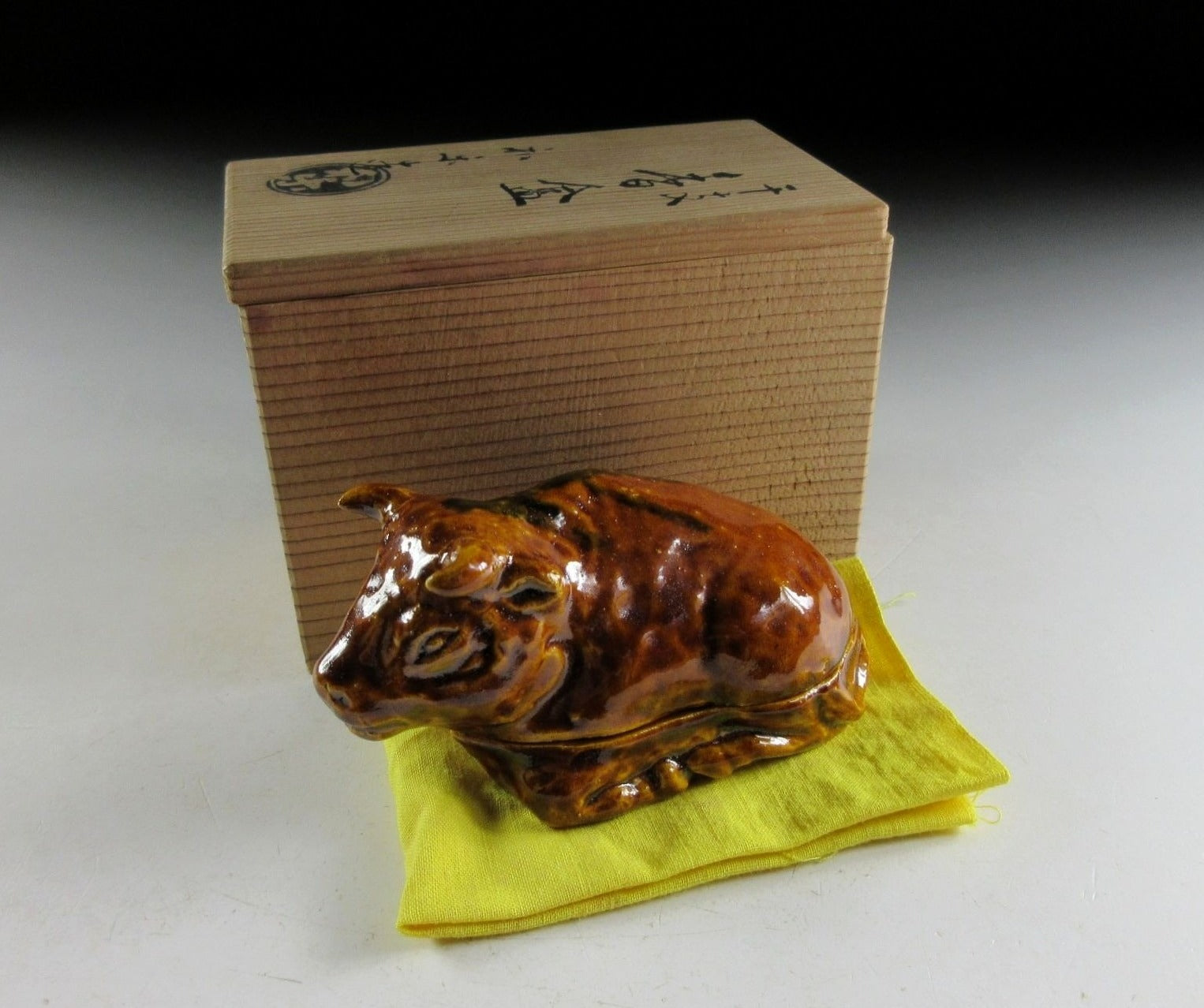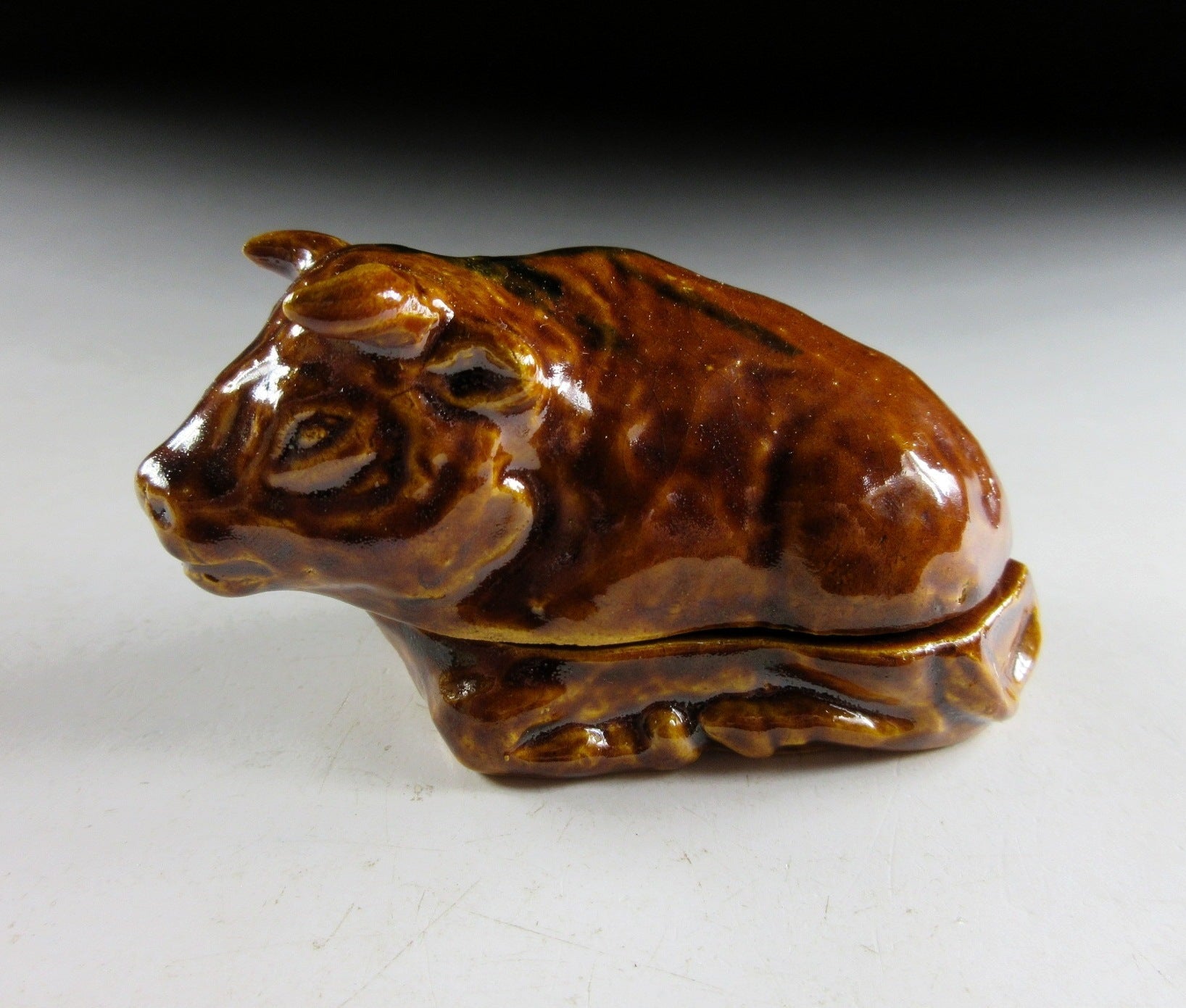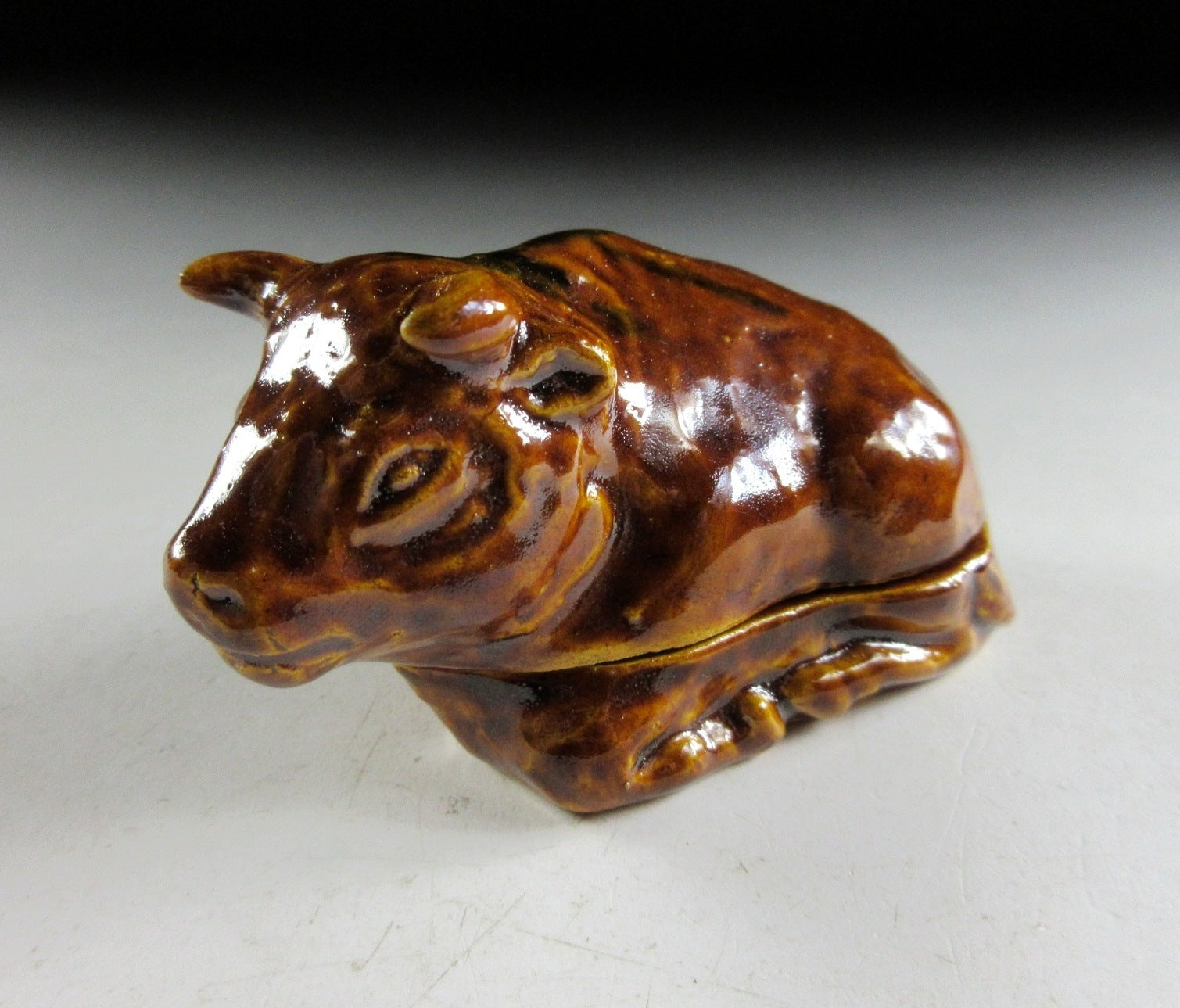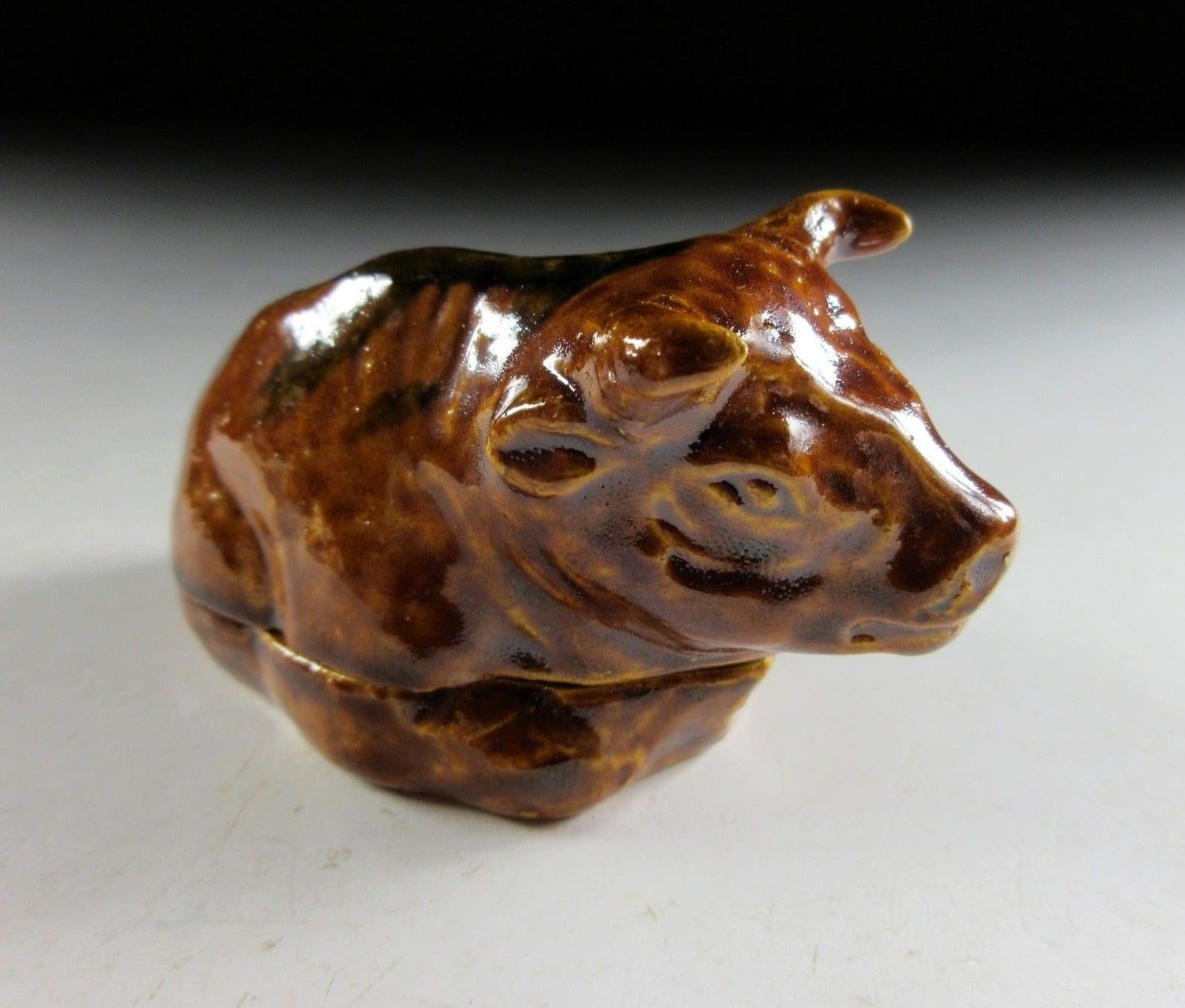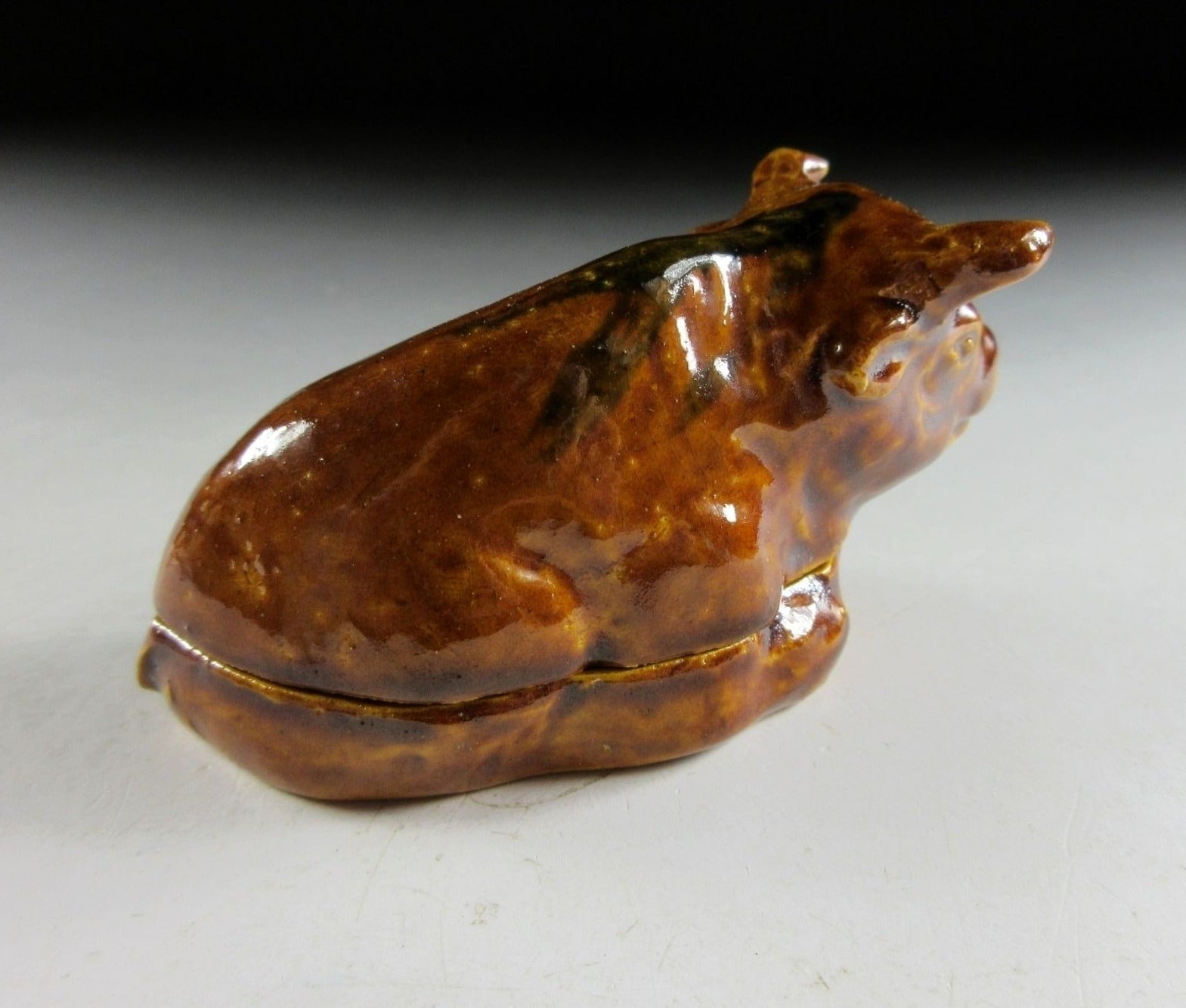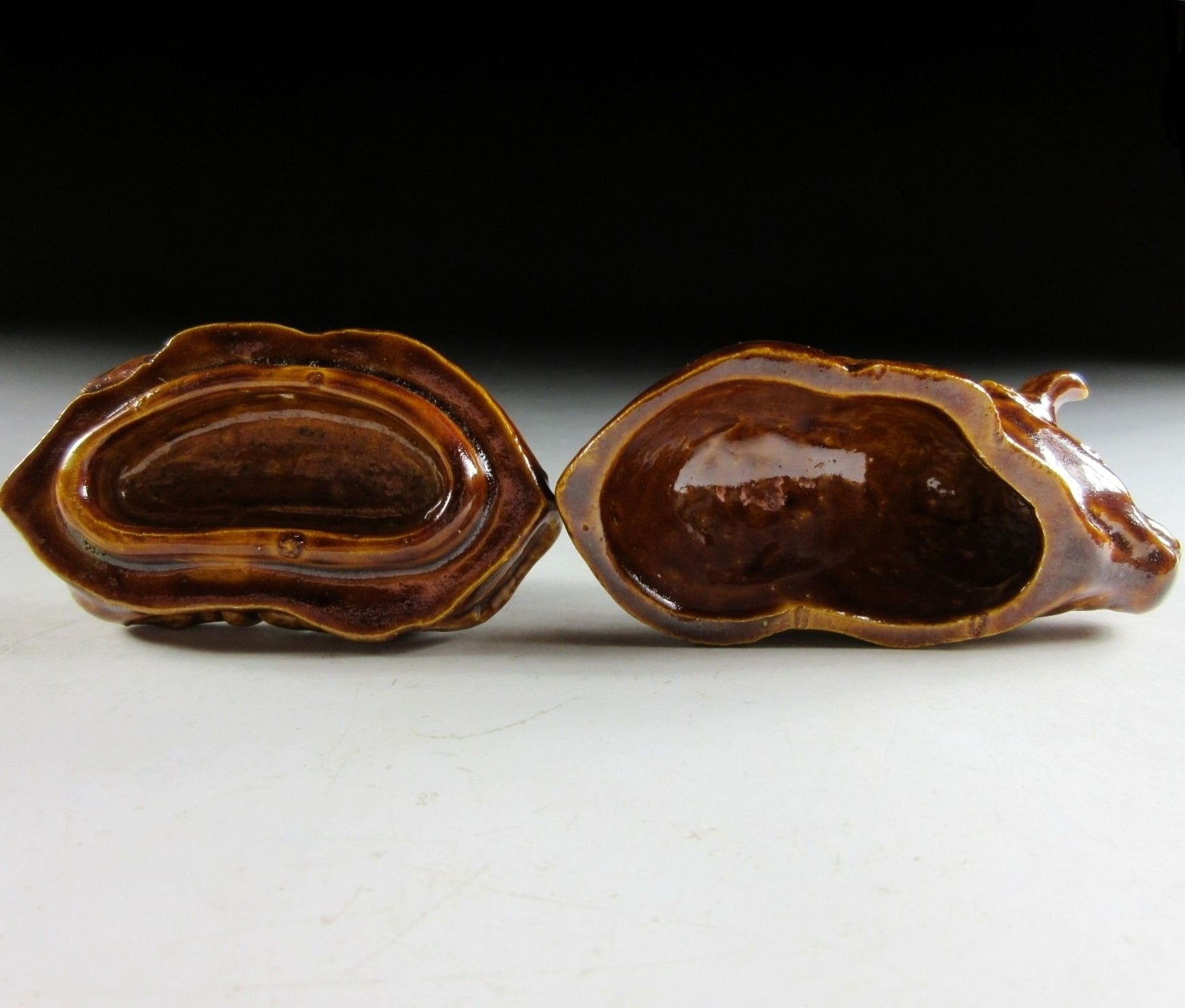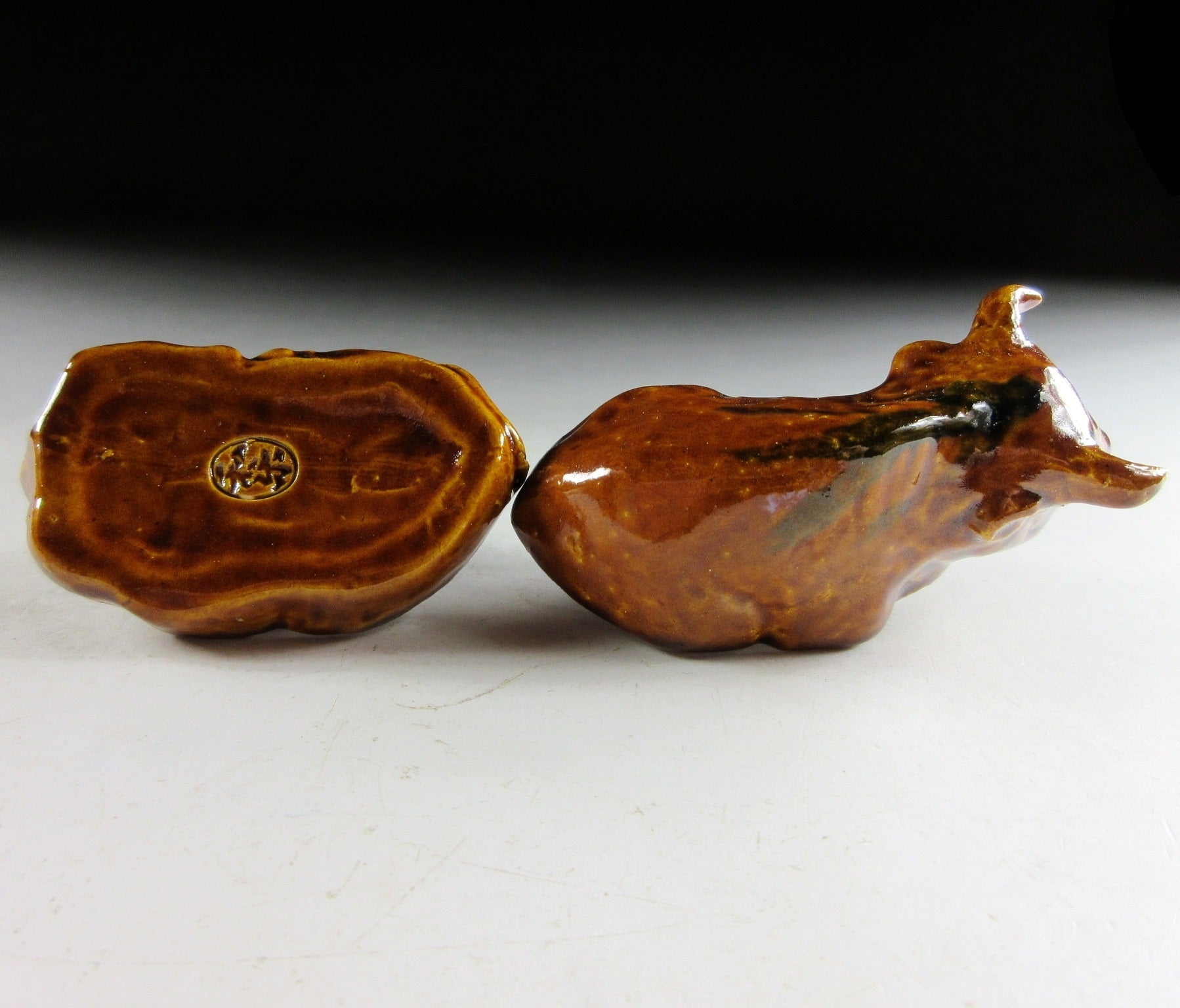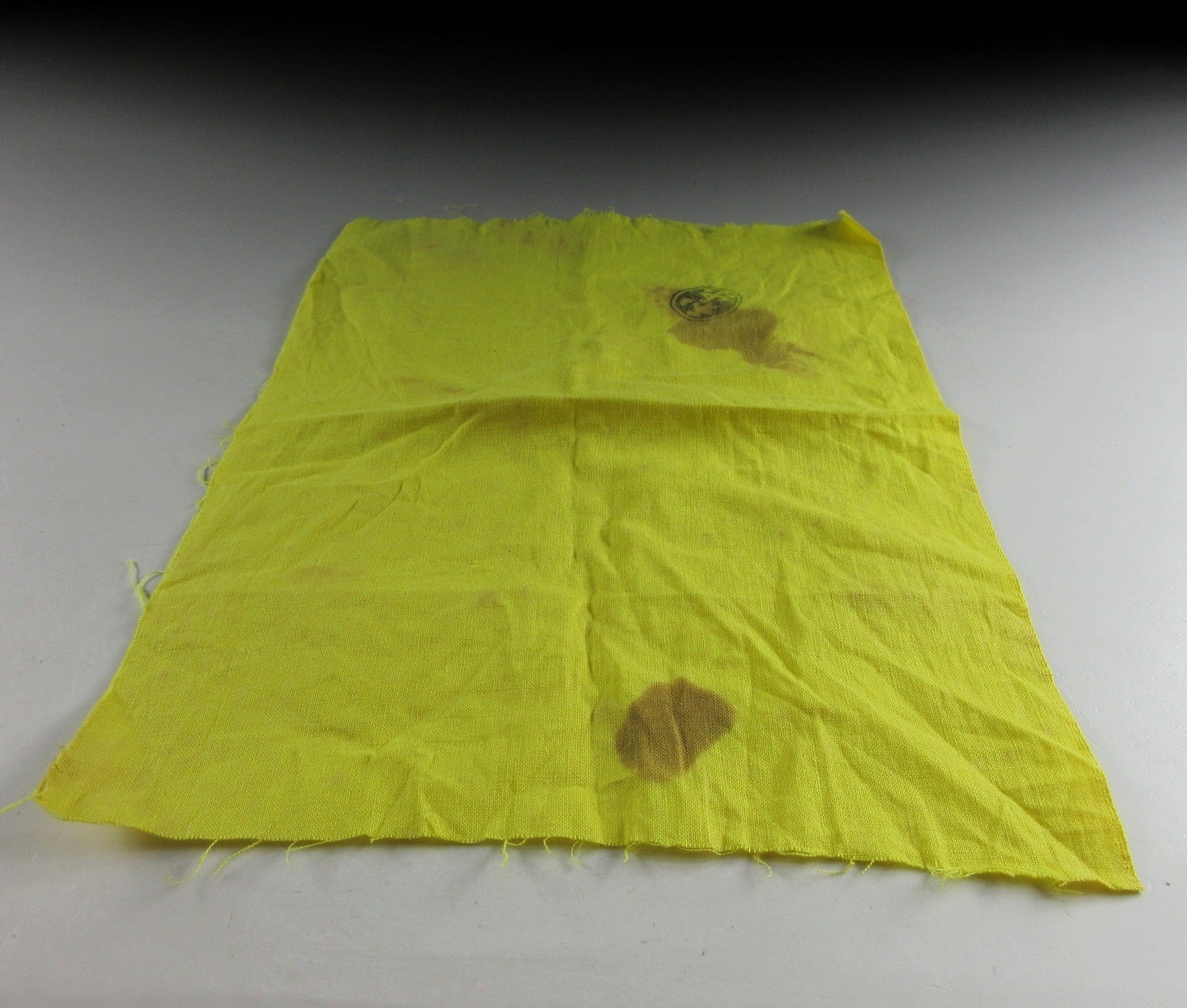Kominka Zakka
Waraku Kawasaki VII Year of the Ox Kogo #2
Waraku Kawasaki VII Year of the Ox Kogo #2
Couldn't load pickup availability
*SHIPPING OPTIONS VARY DEPENDING ON THE DESTINATION, PLEASE SCROLL TO THE END OF THIS LISTING FOR MORE DETAILS.
This listing is for a Raku-ware kogo made 30 years ago by noted potter, Waraku Kawasaki VII. It has been moulded to resemble an ox, and the exterior is coated in ame-yu glaze. It’s suitable for holding both kneaded or woodchip incense, and was most likely made to commemorate the Year of the Ox back in 1985. The stamp of the potter can be found on the bottom, and it comes with its original paper storage box. It also comes with a stamped yellow wrapping cloth for when the item is not in use.
Waraku Kawasaki VII (b.1936, now known as Kizou) is a Raku-ware potter and the seventh generation master of the Waraku kiln lineage. Waraku was born in Kyoto and is the eldest son of the 6th generation. In 1954 he graduated from Hiyoshigaoka Ceramics High School and began studying at the Kyoto Prefectural Ceramics Training Institute's moulding and glazing department. He graduated two years later and began studying under his father. In 1970 he was appointed as the 7th generation master by Marshal-Admiral the Marquis Togo Heihachiro. Togo Heihachiro was an admiral of the fleet in the Imperial Japanese Navy and one of Japan's greatest naval heroes. In 1975 he was given the seal ‘Shin Waraku’ by former head priest of Daitokuji Temple Hotani Komei (1913-1995). In 1996 he held a 60th birthday exhibition at Daimaru in Kyoto, and 1998 marked the 180 year anniversary of the Waraku family tradition. The Waraku family kiln has been producing beautiful Raku pieces since the latter part of the Edo period, and their tea wares are reputed to be some of the best on the market. Waraku bowls are unique because they are wheel-thrown as opposed to hand-turned. Their organic appearance comes from the process of cutting and pinching. The kiln is now in its eighth generation and headed by Kizou’s son Waraku Kawasaki VIII (Motoo). **Fellow sellers, this information was researched by Kominka Zakka and cannot be used in your own listings.
Raku ware refers to low-fired ceramic ware first made in Kyoto by the Raku Family, its origins going as far back as the 16th century. It is traditionally characterised by being hand shaped rather than thrown. Raku is typically delicate, lightweight, and earthy to the touch. Aka (red) raku bowls are fired at 800 degrees, whilst the kuro (black) bowls can be fired up to 1200 degrees. The glaze for black bowls is made from crushed black stones retrieved from the Kamogawa River in Kyoto. Red bowls are coloured by adding translucent glaze over a pinkish clay body. When using raku bowls you should always wipe well with a warm cloth before use. It is possible to cause small cracks if you suddenly add boiling water.
Kogo are for holding incense during the tea ceremony. Kogo vary depending on the season. In summer wooden kogo are used for holding chips of incense wood, and in winter ceramic kogo are used for holding kneaded incense intended for the hearth. During the tea ceremony, incense is added to the charcoal fire during the charcoal-laying procedure.
Sizes
Box: H.7.4 (2.9”) x 10.3cm (4”) x 6.3cm (2.4”)
Kogo: H.4.2cm (1.6”) x L.8.7 (3.4”) x W.4.1cm (1.6”)
Condition
It’s in good condition aside from a chipped glaze spot on the interior, and the cloth has two stains.
THESE ARE SHIPPING ESTIMATES BASED ON THE CURRENT GLOBAL SITUATION
**Germany, France, Greece, Spain, Poland, Austria, Slovakia, Lithuania, Slovenia: NO SHIPPING. Very strict and expensive packaging laws in place and we are not licensed to send products to these countries. We have no plan to register at this time because the process is in some cases very expensive and complicated, plus each country has its own set of regulations and application process.
**USA, UK, Canada, Australia, New Zealand, Switzerland, Norway: Airmail Small Packet (approx. 15-28 days). Combined shipping available up to 2kgs for Airmail Small Packet (please send us a message).
**Asia: Airmail Small Packet (approx. 15-21 days). Combined shipping available up to 2kgs for Airmail Small Packet (please send us a message).
**Central Asia, Middle East, South Africa, Brazil, Mexico: EMS Express 10-15 days.
**Russia: No shipping methods available.
Share
